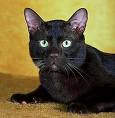The image above, Yellow Gesture, was made using a DianeTownsend Thin Lines yellow that Diane handed to me at her workshop. Her creator's pride in this particular yellow is well founded. Marie Meyer at Huechroval has made a fascinating yellow on black test which gives a great illustration of color strength comparison (coverage). Guess whose yellow pastel came out the strongest?
My review of using the new book, Multi-Brand Color Chart for Pastels, will follow in the next couple of posts.

























